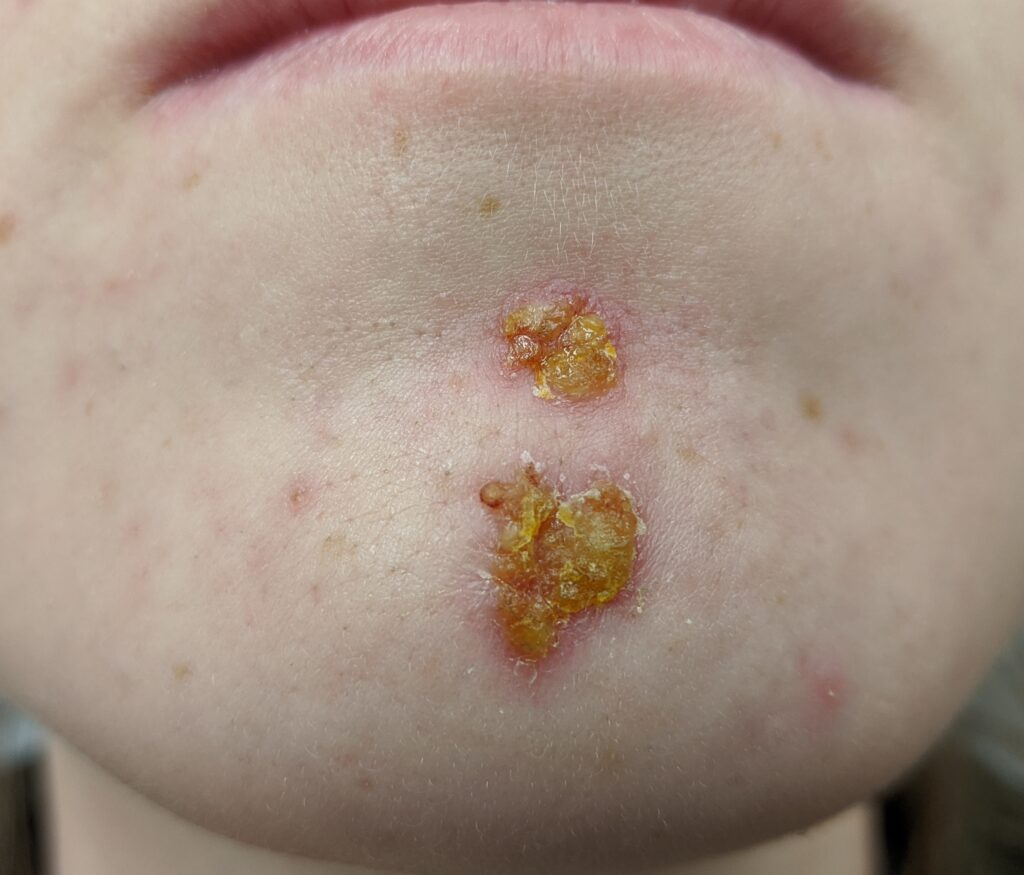Impetigo is a common skin infection usually found in children and infants. It is characterized as single or multiple blisters filled with pus, which pop easily and leave a reddish, raw-looking base and/or honey-colored crust. In most children, impetigo first appears near the nose and then spreads through scratching to other parts of the face, arms or legs. The blisters tend to be itchy.
There are three forms of impetigo:
Ordinary Impetigo is caused by Streptococcal germs. It appears as red sores that rupture quickly, ooze a fluid and then form a honey-colored crust. It primarily affects children from infancy to age two.
Bulbous Impetigo appears as fluid-filled blisters caused by Staphylococcus germs. This contagious infection is carried by the fluid that oozes from the blisters.
Ecthyma, a more serious form of impetigo that penetrates to the second layer of skin (dermis). It is characterized by sores that are painful and/or fluid or pus-filled. These lesions most commonly appear on the legs or feet. The sores break open and scab with a hard yellow-gray crust. It can also cause swollen lymph glands in the affected area.
Impetigo is generally treated with a seven-to-10-day course of prescription oral antibiotics and/or topical antibiotics. The sores tend to heal slowly, so it is important to complete the full course of medications. Please note that over-the-counter topical antibiotics (such as Neosporin) are not effective for treating impetigo.
